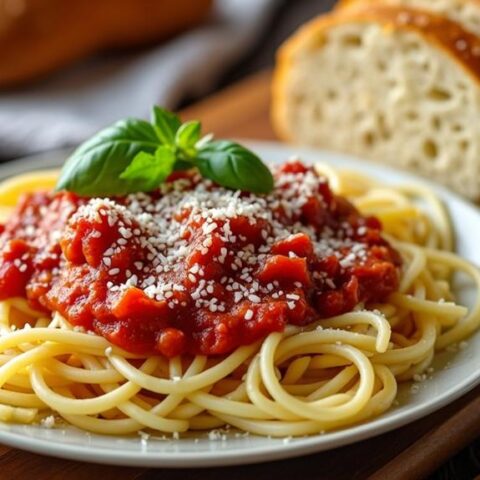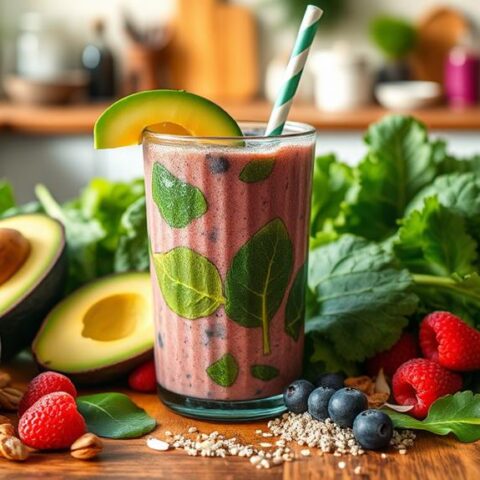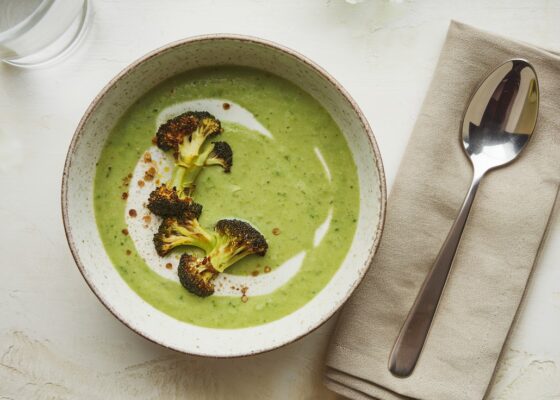
Popcorn can fit into a low-carb diet when portions are carefully monitored. A 3-cup serving contains approximately 18 grams of total carbs and 4 grams of fiber, resulting in 14 grams of net carbs. Air-popped preparation offers the lowest carb content, while healthy toppings like olive oil or nutritional yeast enhance flavor without adding significant carbs. Smart portion control and timing of consumption are essential, as a single serving can represent a substantial portion of daily carb limits. Understanding preparation methods and serving sizes reveals popcorn's potential as a satisfying low-carb snack.
Key Takeaways
- Three cups of air-popped popcorn contain 18 grams of total carbs, with 4 grams of fiber reducing net carbs to 14 grams.
- While popcorn isn't strictly low-carb, its fiber content and portion control make it manageable within most low-carb diet plans.
- Air-popped popcorn offers the lowest carb content at 6 grams per cup, making it preferable to pre-packaged or flavored varieties.
- Morning and pre-workout consumption of 1-2 cups is optimal for better carb management and energy utilization.
- Adding healthy fats like coconut oil or protein toppings helps moderate carbohydrate absorption and enhance satiety.
Understanding Popcorn's Carbohydrate Content
When considering popcorn's place in a low-carb diet, understanding its carbohydrate composition becomes vital. A typical serving size of air-popped popcorn, equivalent to 4-5 cups, contains approximately 30 grams of carbohydrates, including 6 grams of dietary fiber.
For those following a low-carb diet, it's important to calculate net carbs by subtracting fiber from total carbohydrates.
While popcorn can be a healthy snack option on a moderately low-carb diet that allows 100-150 grams of carbs daily, portion control remains paramount.
Moderation is key when enjoying popcorn on a low-carb diet, even with higher daily carbohydrate allowances.
Three cups of air-popped popcorn contains about 14 grams of net carbs, making it a considerable portion of daily carbohydrate allowance.
Understanding these measurements helps individuals make informed decisions about incorporating popcorn into their low-carb eating plan while maintaining their dietary goals.
The Role of Fiber in Popcorn's Net Carbs
Although popcorn contains carbohydrates, its fiber content plays an essential role in determining its impact on a low-carb diet. When calculating net carbs for snack foods like popcorn, the fiber content can be subtracted from the total carbohydrates, as it doesn't greatly affect blood sugar levels. In a typical serving of popcorn, 4 grams of fiber reduce the net carbs to 14 grams, making it more compatible with low-carb and ketogenic diet plans. Distribute protein intake evenly across meals to maintain ketosis, which is key for those on a ketogenic diet. Understanding portion sizes becomes important when incorporating popcorn into a low-carb eating plan. While the fiber content helps offset some carbs, consuming excessive amounts can quickly exceed daily carb limits. For those following a ketogenic diet or strict low-carb regimen, moderate portions guarantee popcorn remains a viable snack option while maintaining dietary goals.
Portion Sizes and Daily Carb Limits
Successful management of popcorn consumption on a low-carb diet requires careful attention to portion sizes and daily carbohydrate limits. With 6 grams of carbs per cup, popcorn can quickly impact daily carb allowances, especially for those following a ketogenic diet where staying under 50 grams is vital for maintaining ketosis. A typical serving size of this healthy snack is approximately 3 cups, containing 18 grams of carbs, which represents a significant portion of daily carb limits for those pursuing weight loss through low-carb eating. To incorporate popcorn while staying within prescribed limits, portion control becomes important. The ketogenic diet, which promotes fat oxidation and mobilization, can aid in weight loss, but moderation is key when enjoying snacks like popcorn. Careful planning guarantees it fits within overall daily carb goals without compromising dietary success or nutritional balance.
Best Ways to Prepare Low-Carb Popcorn
Preparing popcorn for a low-carb diet requires specific techniques to maximize nutritional benefits while minimizing carbohydrate content. Air-popped popcorn stands out as the healthiest preparation method, containing approximately 90 calories and 18 grams of carbohydrates per 3-cup serving.
For those seeking enhanced flavor while maintaining low-carb goals, homemade preparation offers several options. Using minimal amounts of coconut or canola oil for stovetop popping adds taste without excessive calories.
Alternatively, creating microwave popcorn at home using a covered, microwave-safe bowl allows for better ingredient control. Seasoning choices greatly impact the final carbohydrate content, with spices and nutritional yeast offering flavorful alternatives to butter and salt.
These healthy preparation methods, combined with careful portion control, make popcorn a viable option for low-carb dieters. Consider incorporating nutrient-dense ingredients like spices and nutritional yeast to further enhance the flavor while maintaining your low-carb goals.
Healthy Toppings for Keto-Friendly Popcorn
When preparing keto-friendly popcorn, the key lies in selecting toppings that enhance flavor without adding unnecessary carbohydrates. Natural seasonings like nutritional yeast, herbs, and spices provide abundant taste while maintaining the low-carb profile of the snack. The addition of healthy fats through coconut oil or olive oil, combined with protein-rich options like grated Parmesan cheese, creates a satisfying combination that aligns perfectly with ketogenic dietary requirements. Choosing keto-friendly sweeteners such as stevia or erythritol can also be a great way to add a touch of sweetness without disrupting ketosis.
Seasoning Without Added Carbs
The art of seasoning keto-friendly popcorn lies in selecting flavorful toppings that don't add unnecessary carbohydrates to this naturally low-carb snack. Savory toppings like garlic powder, paprika, and nutritional yeast enhance flavor while maintaining a low carbohydrate count, making them ideal choices for those following a ketogenic diet.
Incorporating healthy fats through melted coconut oil or grass-fed butter not only improves taste but also increases satiety. For a dairy-based option, grated Parmesan cheese adds richness without compromising carb limits.
When seasoning popcorn, moderation with salt is essential, and choosing low-sodium herb and spice blends can provide robust flavor profiles while supporting overall health goals. By avoiding sugary additions and focusing on these carb-conscious seasonings, popcorn remains an enjoyable, keto-compatible snack.
Natural Fats and Flavors
Selecting natural fats and flavorful toppings plays a crucial role in transforming plain popcorn into a satisfying keto-friendly snack. For those following a low-carb diet, adding healthy fats like coconut oil or grass-fed butter can enhance flavor while maintaining ketosis.
Nutritional yeast offers a cheesy taste profile and B vitamins without excessive calories, making it an excellent alternative to traditional toppings.
To create delicious, keto-friendly popcorn, incorporating savory seasonings such as paprika, garlic powder, and cayenne pepper adds flavor without impacting carb counts. A light sprinkle of Parmesan cheese provides protein while keeping carbs minimal.
When selecting toppings, it's essential to avoid sugary additions like caramel or chocolate, as these can disrupt ketosis and negate the benefits of portion control.
Comparing Popcorn to Other Low-Carb Snacks
Making informed snack choices on a low-carb diet requires careful comparison of nutritional values, and popcorn stands out favorably against many traditional alternatives. With only 6 grams of carbs per cup, popcorn contains considerably fewer carbohydrates than potato chips, which typically pack 15-20 grams per serving. For those following moderate low-carb diets allowing 100-150 grams of daily carbohydrate intake, a 3-cup serving of popcorn fits well within these parameters while providing 4 grams of satisfying fiber. Unlike calorie-dense low-carb snacks such as nuts, popcorn offers greater volume, making it a more satisfying choice for the same carb impact. However, portion control remains essential, as exceeding the recommended serving size can quickly increase carb consumption beyond intended limits. Additionally, nuts and seeds contribute healthy fats and plant-based proteins, offering another great option for those seeking variety in their low-carb snack choices.
Timing Your Popcorn Snacks on a Low-Carb Diet
When consuming popcorn on a low-carb diet, strategic timing can greatly impact overall dietary success. Eating popcorn earlier in the day allows better management of carb intake, while a mid-afternoon serving can help prevent cravings for high-carb alternatives later.
| Time of Day | Benefits | Portion Guidelines |
|---|---|---|
| Morning | Better carb management | 1-2 cups |
| Mid-afternoon | Prevents later cravings | 2-3 cups |
| Pre-workout | Energy boost | 1-2 cups |
| Evening | Limited benefits | 1 cup max |
| Post-workout | Recovery support | 2-3 cups |
For ideal results, consume popcorn when other carb-heavy meals aren't planned. Combining portion control of 1-3 cups with healthy fats like butter or olive oil can enhance satiety and make this snack choice more effective within daily carb limits. Remember that hidden carbs can come from sauces, processed foods, and alcoholic beverages, so it's crucial to monitor these sources to maintain ketosis.
Managing Blood Sugar With Popcorn Consumption
Although popcorn can fit into a blood sugar-conscious diet, careful attention to portion sizes and preparation methods remains vital for maintaining stable glucose levels. With approximately 30 grams of carbohydrates per serving, monitoring portion control helps prevent unwanted blood sugar spikes. The fiber content in popcorn plays an important role in managing glucose levels, as it slows down carbohydrate absorption in the digestive system. A standard serving contains about 18 grams of carbs and 4 grams of fiber, resulting in 14 net carbs. To further stabilize blood sugar response, combining popcorn with healthy fats or protein can be beneficial. This pairing helps moderate the rate at which carbohydrates enter the bloodstream, making popcorn a more suitable snack when consumed in moderation. Adding healthy fats such as those found in avocados, nuts, or fish can improve insulin sensitivity, further supporting blood sugar management.
Smart Shopping Tips for Low-Carb Popcorn Options
Smart shoppers seeking low-carb popcorn options benefit from understanding key nutritional factors before making their purchase decisions. When comparing products, air-popped varieties offer the lowest carb content, with approximately 6 grams per cup. Careful examination of nutrition labels reveals fiber content, which reduces net carbs and enhances the snack's nutritional profile.
| Product Type | Carb Benefits | Shopping Tips |
|---|---|---|
| Air-Popped | Lowest carb count | Check fiber content |
| Plain Kernels | Control portions | Buy for homemade |
| Pre-Packaged | Convenience | Avoid unhealthy additives |
For ideal low-carb choices, select plain or lightly salted varieties over flavored options that contain added sugars. Purchasing whole kernels for homemade popcorn provides the most control over ingredients and portions, while avoiding unnecessary additives commonly found in commercial varieties. Refined carbohydrates such as those found in white bread and pasta should be avoided, highlighting the importance of choosing low-carb options like air-popped popcorn.
Balancing Popcorn Within Your Daily Macros
Successful incorporation of popcorn into a low-carb lifestyle requires careful attention to daily macro calculations and portion sizes. When following a keto diet or pursuing weight loss goals, tracking carbohydrate intake becomes essential for maintaining ketosis and achieving desired results. Air-popped popcorn, while considered among acceptable low-carb snacks, contains approximately 6 grams of carbohydrates per cup. This means consuming three cups could account for more than one-third of a typical keto dieter's daily carb allowance. To maintain a balanced diet while enjoying popcorn, individuals should carefully measure portions and factor them into their daily macros. This approach allows for occasional indulgence in popcorn while ensuring adherence to overall dietary goals and preventing unintended carbohydrate overconsumption. Additionally, staying informed about hidden carbs in processed foods can help avoid unexpected spikes in daily carb intake.
Frequently Asked Questions
How Much Popcorn Can I Eat on a Low-Carb Diet?
On a low-carb diet, individuals should limit air-popped popcorn consumption to 1-2 cups per serving, containing approximately 7-14 net carbs, while incorporating healthy fats for enhanced satiety and nutrition.
Is Popcorn a Good Low-Carb Snack?
Air-popped popcorn offers health benefits as a low-carb snack when portions are controlled. Its high dietary fiber content promotes satiety, while natural flavorings can enhance taste without compromising weight loss or nutritional goals.
What Is a Portion Size of Popcorn?
A standard serving size of air-popped popcorn is three cups, providing about 90 calories. Portion control remains essential when measuring popcorn, regardless of type, to align with healthy snacking and dietary guidelines.
Does Popcorn Have Less Carbs Than Corn on the Cob?
Air-popped popcorn contains slightly more carbohydrates per serving than corn on the cob, but offers higher fiber content and larger portion sizes while maintaining comparable net carbs for healthier snacking options.
Conclusion
Popcorn can fit into a low-carb lifestyle when consumed mindfully. While not zero-carb, its fiber content helps offset total carbohydrates, making it a reasonable choice for many low-carb dieters. Success lies in portion control, preparation method, and topping selection. By measuring servings, choosing air-popped varieties, and using keto-friendly seasonings, individuals can enjoy this satisfying snack while maintaining their carbohydrate goals and blood sugar stability.









No Comments